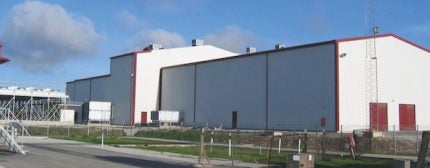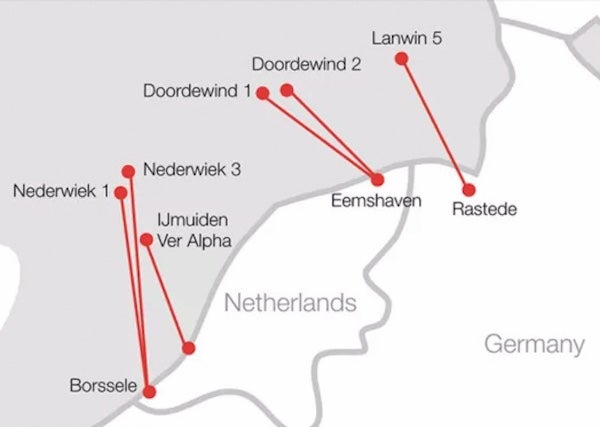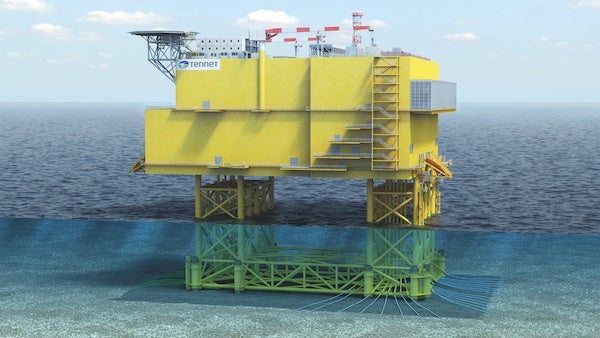
EstLink 1 (in addition to EstLink 2) enables power exchange between Finland and Estonia, which is normally not possible as the countries’ grids are asynchronous. The EstLink 1 HVDC system enables the efficient transmission of electricity via 105 km of underground and subsea cables, providing significant power quality benefits to both grids, notes Hitachi Energy.
After more than 16 years of operation, the control and protection system of EstLink 1 will be upgraded with the latest MACH™ (Modular Advanced Control for HVDC) technology.
Another recent significant order reported by Hitachi Energy was that placed by German transmission system operator, TransnetBW, for two Enhanced STATCOM1 stations employing SVC Light® Enhanced, which Hitachi Energy describes as “next-generation grid stabilisation technology.” The order reflects the increasing need for technologies that increase grid stability to enable expansion of renewable energy and the shift away from conventional power generation.

“The implementation of this solution is another milestone for us in ensuring safe and reliable grid operation in the future,” said Dr Werner Götz, CEO of TransnetBW.
According to Hitachi Energy its “power quality solutions enable grid operators to dampen the destabilising effects of renewable energy and expand transmission capacity without building new lines.”
The SVC Light Enhanced systems to be supplied to TransnetBW “combine two power quality and grid stabilisation technologies in a single compact device,” notes Hitachi Energy. Basically, it integrates the efficient reactive power compensation of SVC Light with supercapacitors, which can absorb and inject active power into the grid in milliseconds.
SVC Light Enhanced technology “safely protects grid stability, reliability and power quality as the transition to renewable energy accelerates”, asserts Hitachi Energy, and “advanced features like Grid Forming Control provide significant improvements over previous solutions and make this technology less sensitive to future changes in the network.”
Hitachi Energy, in conjunction with Petrofac, has in addition announced a second project within TenneT’s programme of standardised 2 GW HVDC links for offshore wind. The companies say they will “work together to deliver Nederwiek 1 and integrate offshore wind at scale into the Dutch grid.” The project, announced at the end of 2023, has been awarded under their multi-year “framework agreement” with Dutch–German transmission system operator TenneT, worth more than $14 billion, aimed at expanding offshore wind generating capacity in the North Sea.
In an initial announcement in March 2023, Hitachi Energy and Petrofac reported the award of the landmark six-HVDC-project framework agreement. This sees Hitachi Energy supply the HVDC converter technology (HVDC Light) while Petrofac undertakes the engineering, procurement, construction, and installation (EPCI) of the offshore platforms and elements of the onshore converter stations. Alongside the framework agreement came the award of the first project covered by the agreement, IJmuiden Ver Alpha.

Since that initial announcement, Hitachi Energy and Petrofac teams have collaborated on preparatory works, reserving production capacity in line with their new business model for offshore HVDC technology and platforms, and have proceeded with detailed design for IJmuiden Ver Alpha.
“Our strong collaboration with Petrofac, based on an agile business model, scalable solutions and synergies among projects, allows us to join forces and support TenneT in its ambition to accelerate offshore wind deployment in the North Sea”, says Niklas Persson, managing director of Hitachi Energy’s grid integration business.
“We have been working collaboratively with our partner, Hitachi Energy, and our client on the first project, IJmuiden Ver Alpha. The award of Nederwiek 1 allows us to take the project to the next stage as we continue to focus on the standardisation and harmonisation of design and execution that will be central to the ‘design one, build many’ philosophy of the 2 GW programme,” commented John Pearson, chief operating officer, energy transition projects of Petrofac.
Additional projects within TenneT’s 2 GW programme are expected to be awarded at approximately six-month intervals. These are the grid connections landing at Geertruidenberg or Moerdijk (Nederwiek 3) and Eemshaven (Doordewind 1 and Doordewind 2). The sixth project, the German connection LanWin5, will be connected near Rastede, Germany.






